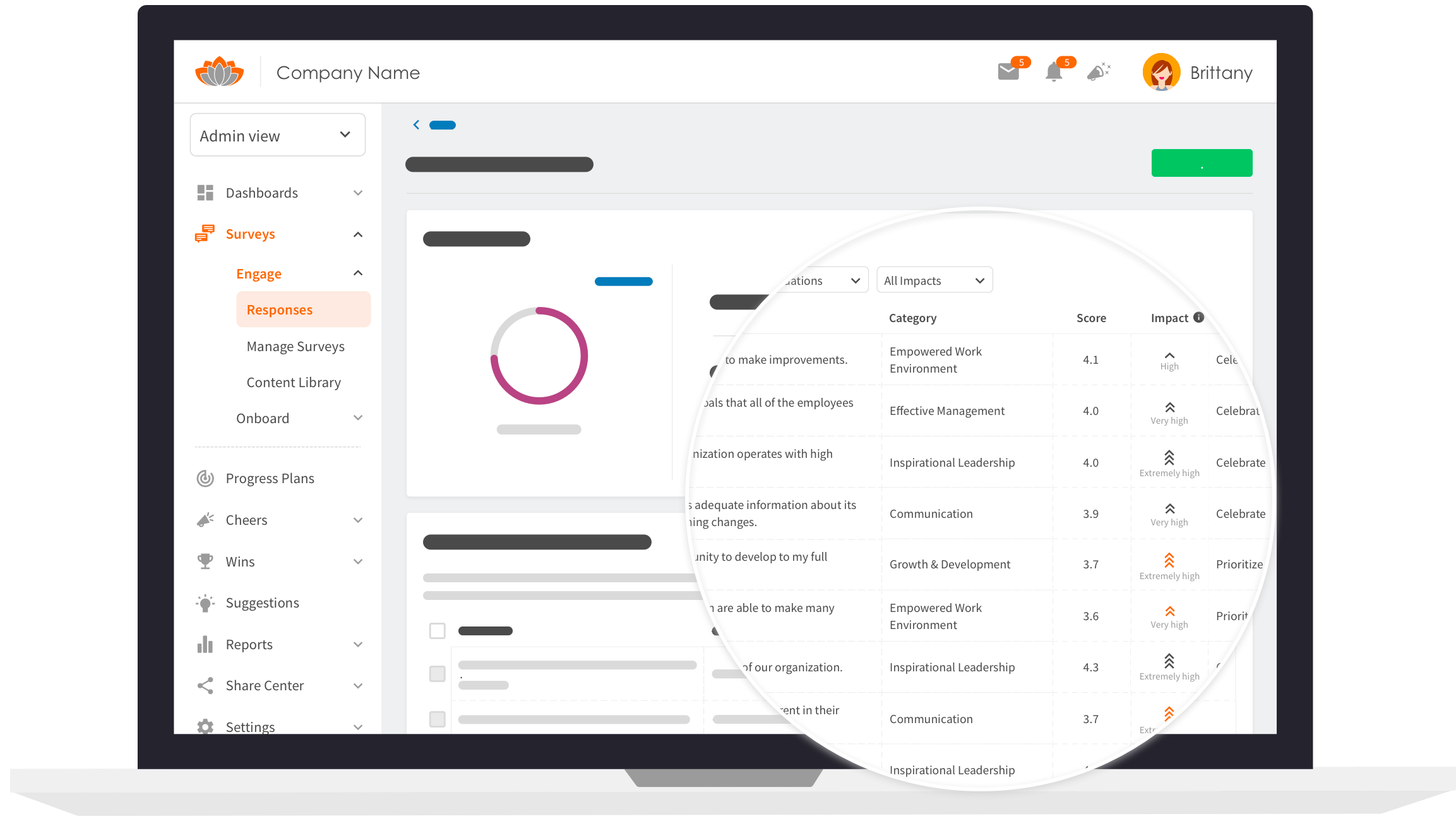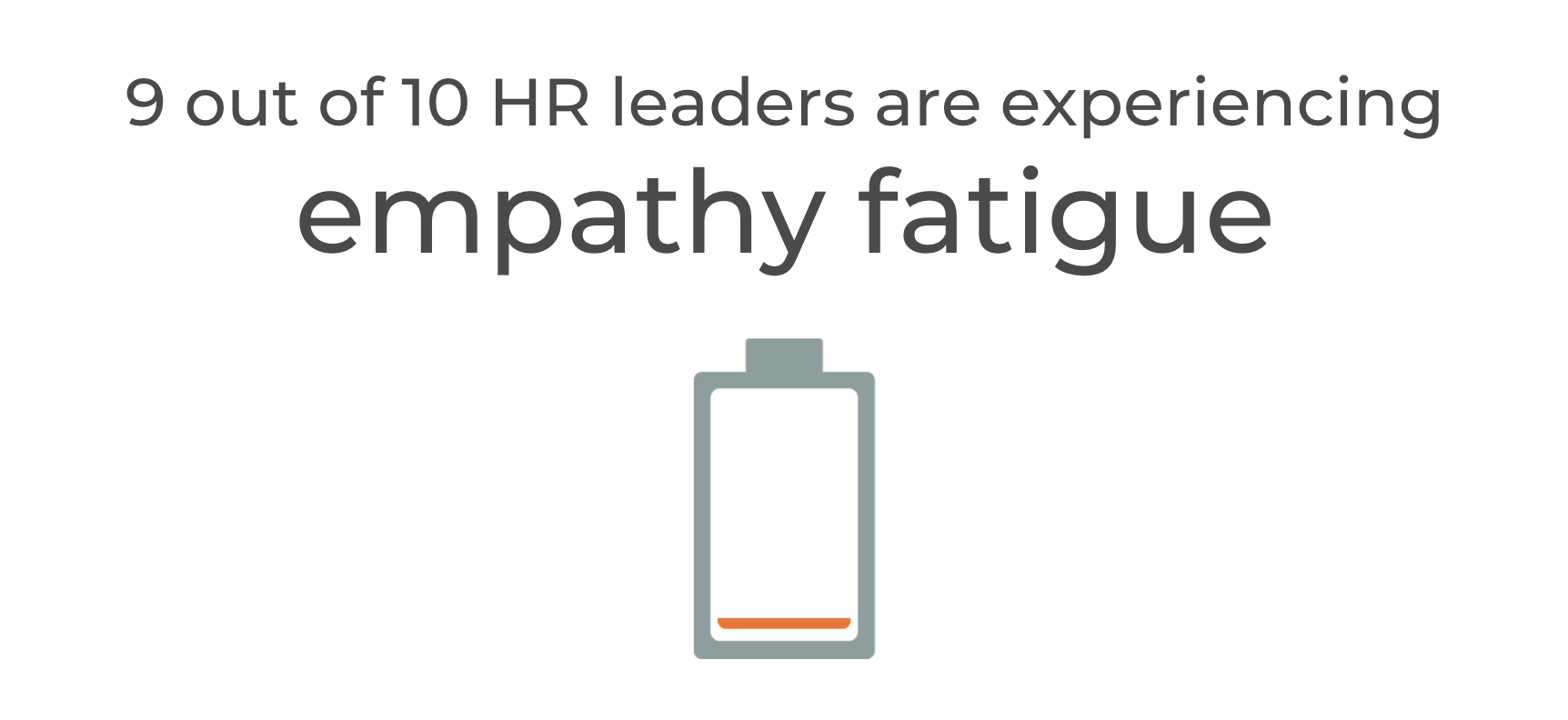A Helpful FAQ If You Are Considering TINYpulse For Your Organization

Healthy organizations everywhere have HR leaders struggling to understand how happy, frustrated, or burnt-out their employees are.
Their organizations need to make decisions to address the Great Resignation, hybrid/remote work policies, and health-related policies like vaccine mandates.
And once they make those decisions, HR leaders need a way to make sure an employee exodus isn't around the corner.
Therefore HR execs are being called on to have more answers than ever.
And C-suites are looking to them make recommendations that impact the business in.
If you've ever felt the pain of high turnover, poor company culture, and lack of data for people-related decisions, this post is for you.
Here are the most important questions for you to ask yourself and our responses to help you decide if a conversation with TINYpulse or other engagement software provider is right for you.
How do I know if my company needs engagement software?
Hundreds of organizations trust TINYpulse to help them stay ahead of issues before they turn into organizational problems.
Employee turnover. You and I both know it's expensive. And you can expect to pay up to three times an employee's salary when they leave. So why take the risk? The obvious answer is because you may feel you don't have a choice. But just think about that for a second. Talent is scarce right now, and you need to hold onto your best employees for the investment in hiring and onboarding them to pay off.
Poor communication. Are you repeating yourself 10 times more than you should? Are employees clear on what to expect from you and the organization? Do people keep complaining and asking about the same things repeatedly? This means you're either not communicating enough or what you are saying is being misinterpreted. Worse, this could mean a systemic lack of trust.
Low morale at work. Your company culture directly affects how your people feel about coming to work each day, so if managers aren't effective or empowering staff, wouldn't you want to know? Negative attitudes spread like wildfire, so it's in your best interest to address them ASAP.
What makes good employee engagement software?
Good engagement software is the one your team will use and take action consistently.
Ideally your team will be actively using TINYpulse every day. Which is why we designed it to be as lightweight as possible.
So that it's not a heavy lift to use regularly – for example, sending safe private messages to survey respondents or building data-driven HR programs with Key Driver Analysis.
These are the actions that affect real people. Software should not get in the way.
Where should I start when deciding which engagement software to buy?
Start by getting commitment from your leadership team. This will 1) show you're taking the process seriously and 2) help you find out if your team is committed to making change.
Work slowly. If you don't have buy-in, any engagement programs you build will lose 75% of their power.
Once you have commitment from your leadership team, the next step is to identify what features are important to you and your team.
Typically the most needed features are:
- Pulse surveys
- Yearly / topical assessments
- Employee recognition
- Data / trending tools
- Reporting
After that, do some research on different software providers to make sure you get the features you require.
Then, start a conversation with different software providers to see which one works best for you. You can learn a great deal about how to navigate your organization's specific challenges by talking to real people.
What is the best way to evaluate engagement software vendors and their products?
There's a little-known reason you won't find a lot of free trials when it comes to engagement software.
The main issue with free trials is they are always short-term.
If you deploy employee engagement software in fits and starts, this can actually do more harm than good.
Engagement software typically involves a fast-pace of employee surveys and assessments. If your leadership team is running surveys one month, then going radio silent the next, you will destroy your leadership credibility.
Make the commitment to invest in employee engagement first.
Then, it's important to evaluate engagement software vendors by looking at their track record and customer base.
By doing so, you can get a sense of how successful the software has been in the past and how happy their customers are.
Finally, be sure to ask the vendor lots of questions. Every leadership situation is different and any provider that cares about your success will invest in finding answers for you.
What's a good definition of employee engagement?
“The extent to which one is emotionally, cognitively, and behaviorally invested in their work.”
This definition was coined by our People Science team led by Dr. Elora Voyles, IO Psychologist and leading researcher on organizational behavior.
How do you actually improve engagement with software?
First you need to make the commitment to positive change in your organization.
Just like losing a few pounds or getting fit, habits are hard especially if you have to remember or endure self-discipline exercises.
Instead, engagement software will help you create healthy management habits and keep them.
You'll be able to do holistic assessments of your organization. Pulse surveys to monitor your progress.
It can also help to create a social environment where employees can recognize their peers and improve the culture directly.
This type of software is ideal for companies that have remote workers or a large number of employees.
What are the benefits of engagement software for HR leaders?
The biggest benefit is that an engagement platform helps you track and analyze the results of engagement surveys.
Without you having to become a semi-professional data scientist.
Nevertheless the data is invaluable as a starting point to address workplace issues and improve retention rates.
Also, using engagement data instantly make HR less "squishy."
It gets HR leaders and their teams on firmer footing to help the C-suite understand how their judgment, decisions, and efforts make a difference.
It’s been said time and again that engagement is “just one thing HR does” – as opposed to say technology or benefits.
And after all, what company doesn’t want engaged employees?
Having a consistent way for your organization to measure and improve engagement allows you to show results quickly and with ease.
How does my company's size affect which engagement software will work best for us?
The size of your company will have a significant impact on the type of engagement software that will be the best fit.
Larger companies typically need software that can analyze and display data and insights in a way leaders can understand.
Smaller companies may be able to get away with using more simplistic software or even relying on manual processes.
When considering other needs for engagement software, it's important to first determine the scope of your needs.
What kind of communications do you need to support? What features are essential for your team? How global does your company share data and results?
Once you have a good understanding of your requirements, you can then begin to evaluate different solutions and find the one that best meets your needs.
Who should be responsible for its day-to-day maintenance?
When everybody owns it, nobody does.
Pick an individual or a small team to lead your engagement programs.
If it's an individual, this is the person who will administer surveys, track data, and demonstrate success.
Separate this role in time and effort from your other HR activities.
Sell this role by highlighting its exposure to the entire leadership team.
This person should only focus on the strategy of change - not how it gets implemented or maintained after takeoff.
That's the leadership team's job.
But once leadership makes decisions, this person needs to use that same engagement software to communicate the results back to the organization.
Start with one dedicated resource for this engagement program, then add others if needed later on.
How do you structure an employee engagement survey?
The key to any engagement survey is 1) asking the right questions and 2) getting both quantitative and qualitative feedback.
Asking the right questions is hopefully obvious.
By using a survey you are asking others to spend their time sharing feedback. You want to make sure you are asking questions that will help you understand how people feel about their work, their team, and the organization.
Secondly, ensure that you get both quantitative and qualitative feedback.
Quantitative data provides numerical insights (e.g., how many people agree or disagree with a statement). Qualitative data provides insights about the reasons why quantitative data is high or low (e.g., people may not agree with a statement because it's "too vague").
Finally explain your reasoning for asking certain questions.
One of the worst results is getting low survey response rate because employees believe you're barking up the wrong tree. This is especially true when you are asking questions that can be construed as negative.
What's a pulse survey?
A pulse survey is a quick, informal way to collect feedback from employees. It can be used to assess employee satisfaction, engagement, or other attitudes.
Pulse surveys are typically short, with a few questions that can be answered with a simple "yes" or "no." They can be administered via email, in-person, or even through an online poll.
Why use a pulse survey?
Pulse surveys can help you gather feedback quickly and easily. They're also relatively inexpensive and easy to administer. This makes them a good option for assessing employee attitudes on a regular basis.
Pulse surveys can also help you identify areas of concern early on, before become bigger problems. And if you do need to make changes that affect employees, pulse surveys can help identify how those changes might be received.
How often should we conduct employee surveys
As often as you can take action on feedback.
This is an important one.
If you survey more frequently than your team can take action, it can do more harm than not surveying at all.
Think about it. If you ask someone for feedback and they hear nothing about what you do with it, do you think they're going to spend valuable time sharing feedback again?
Not likely.
Instead of asking frequently, try to create a cadence that works for your leaders and for your team.
What type of response rate am I looking for when conducting an employee survey (i.e., 40%?)
Aim for at least 40 percent for your employee survey to get a good representative sample.
Strictly speaking anything below that and you risk have a large enough sample size to make valid statistical conclusions.
But let's say you're consistently getting less than 40 percent.
The feedback is by no means worthless.
Non-responses are also data. It tells you employees don't have a strong opinion on this question. In this case, run a more holistic survey to understand what topics are of highest concern.
Or, too few employees understand the importance of the surveys. And you need to do more internal marketing to highlight its importance.
These are both issues you can resolve.
How can I be sure that my employees will like the engagement software I buy?
Consistency.
Consistency of use and consistency of action taken by leadership.
If managers, leaders and owners of small businesses are consistent in how they use the engagement software, employees will believe that their company cares about them. And when employees think that their company cares for them, they're much more likely to care about the business' goals.
Employees who feel cared for are more likely to engage with each other -- which leads to increased productivity at lower costs. As a result, the engagement software investment pays for itself far more than most business software. That's because it literally costs less money over time to keep an employee well-engaged than it does down the road to replace him or her after losing motivation or dedication altogether.
Lastly, make it fun.
That's why TINYpulse offers features like Cheers for Peers that helps employees recognize and reward each other for a job well done.
Are there any downsides of using engagement software?
The downsides are all short term.
And they all stem from giving up too soon.
If you only use engagement software for a short amount of time, employees will believe it was a pet project and that no one ACTUALLY cares about their wellbeing.
As this happens, they will be less inclined to use the software.
Secondly, the most important business problems are usually complex.
They take time to solve.
This is why there are so few truly great companies.
Some companies work for years to build their culture and engagement and see their hard work pay off.
But most just give up too soon.
What are the benefits of using an employee recognition system in my workplace?
There are many benefits of using an employee recognition system in your workplace. Some of the benefits include:
- Boosting morale and motivation - The benefits of using an employee recognition system in your workplace are many and profound. When employees feel appreciated for their hard work, they are more likely to be motivated and productive. An effective employee recognition system can help to boost morale and create a positive work environment.
- Enhancing team work - An employee recognition system can help to create a workplace where employees feel appreciated and motivated to achieve common goals.
- Encouraging a positive attitude - Recognition can help create a positive work culture where employees feel appreciated and supported. This can lead to a more productive and enjoyable workplace.
- Improving employee retention - Happy employees are less likely to leave their jobs, so using a recognition system can help to reduce turnover and keep employees around for longer.
- Building a positive reputation - A recognition program that rewards all of the different roles within a company (not just management) can work to create positive vibes and maintain brand awareness and loyalty among customers and employees.
Conclusion
When you’re ready to start looking for employee engagement software, I recommend you take a look at these frequently asked questions.
I hope they help guide your decision-making process and set up an opportunity for success in the future.
If this sounds like something you want to explore further, contact us today.
Our team of engagement consultants are happy to provide a demo of TINYpulse so you can see what it has to offer before committing.
Share this
You May Also Like
These Related Stories

7 Reasons You Should Be Using Employee Engagement Software

5 Ways To Boost Your Engagement Survey Response Rate


.png?width=534&height=632&name=blog%20ad%20(1).png)
